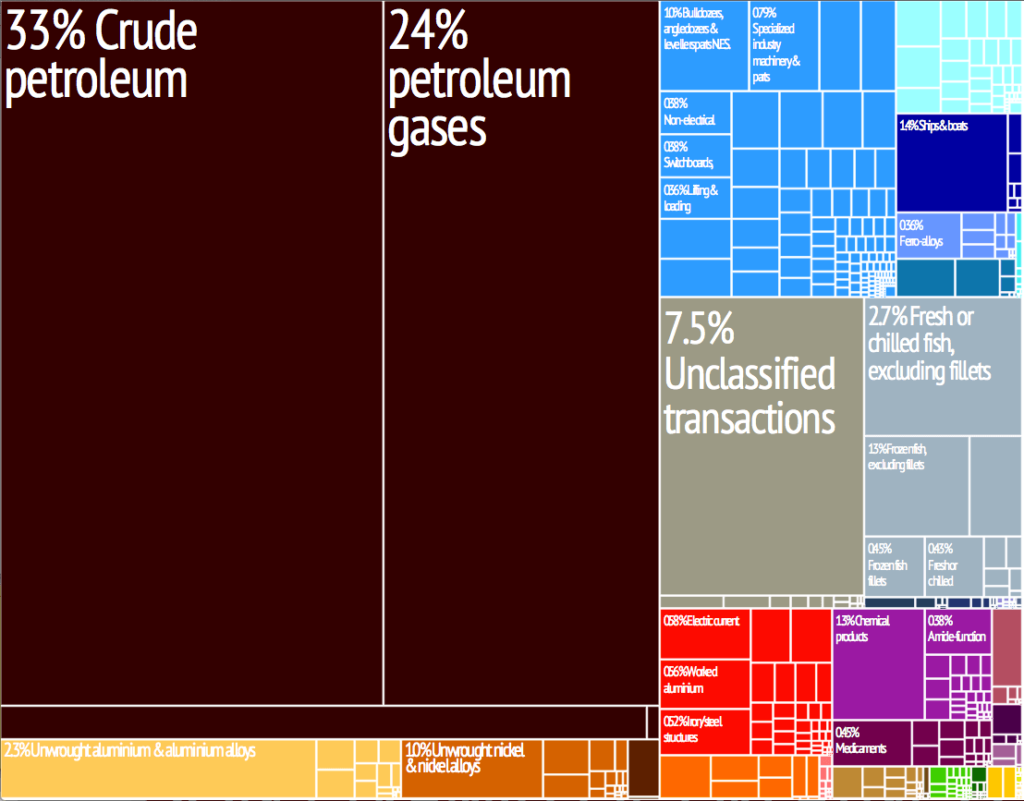After the Oil: Norway’s Green Shift
Norway’s prosperity is impossible to separate from its oil and gas. resources. Although there are several other factors that contribute to its wealth (for example: Norwegian women have been an active part of the workforce for a much longer time than in most other countries) nothing quite beats the country’s ‘black gold’.

Norway is currently among the world’s richest countries, a staggering 496 times richer than Burundi, the world’s poorest, according to the World Bank. If not for the oil, Norway would be less wealthy but most likely still on par with its neighbours Denmark and Sweden.
Besides its natural resources, Norway’s economy relies on several other key industries, such as salmon and shipping.
Below we will explore a few exciting green opportunities for a post-oil Norway.
Opportunities for a Post-Oil Norway
A report commissioned by Manifest Centre for Societal Analysis on a New Industrial Strategy for Norway describes what a green shift should look like and points out the growth areas that should solve the oil dependency. These sectors have earlier been identified as potential high-growth green sectors by the Confederation of Norwegian Enterprise (CNE):
- Offshore wind
- Hydrogen
- Carbon capture and storage
- Maritime industry
- Batteries
Transportation and Batteries
To start with the last one, the transport sector represents 25 % of Europe’s CO2 emissions and sustainable mobility is one of the key focuses of the European Green deal. Innovation Norway, the government institute promoting Norwegian business, has published this webinar to look into the status of the battery ecosystem in Norway and Sweden.
The battery production could be a huge opportunity for Norway. Not only for lucrative energy export, but also to serve the domestic market. Due to the cold weather, a large electric car fleet and several other factors, Norwegians are use energy consumers. The 5 million Norwegians actually use as much electricity as entire Sweden, which is double Norway’s size.
Several studies show that Norway has the potential to become a serious player in the battery industry. According to McKinsey, Norway can capture a market share within battery production of €9 billion by 2030 and €13 to 36 billion by 2050.43 Sintef estimates that battery production in Norway is currently valued at NOK 800 million, but can reach NOK 10 billion and support 7 000 jobs by 2030, and NOK 50 billion by 2050 and 15 000 jobs.44
Cheap energy & Self-driving Innovation
The focus on batteries does not come out of nowhere. Ironically enough for an oil giant, Norway is leading the way in the early adaption of electric driving. Through a variety of government incentives, Norway has been one of the most successful countries in stimulating the purchase of electric cars.

This goverment-stimulated boom has set in motion a large amount of adjacent innovations, such as in the field of charging networks. Using tech from a former NASA architect, Norwegian taxis will soon be wirelessly charging using special pads embedded under the road while waiting for the next ride.
Innovation friendly policy
With medieval origins and a quaint, colorful port, the low-rise Norwegian city of Trondheim doesn’t look very futuristic. But the former Viking capital is making waves with a pioneering transport initiative: a zero-emissions, self-driving electric ferry. To many it is obvious that the next step in transportation is the rise of self-driving or autonomous transportation. Norway was already a pioneer in electric ferries and again is at the forefront when it comes to making them self-driving.
That these innovations take place in Norway is not a coincidence. Norway is one of the world’s top countries in readiness for self-driving cars and autonomous vehicles. In Norway, rules and regulations are specifically adapted to accommodate autonomous vehicles. This is another example of how regulatory adaption can stimulate innovation rather than standing in its way.
Rough terrain
Besides a drive to move away from oil and gas, Norway’s transport innovation also seems to be pushed forward by its own geography. The country’s many fjords and rough mountainous areas make it a challenging place to build infrastructure. Instead of locking out people living in remote towns, Norway has been pioneering next-to-impossible tunnels and other infrastructure projects. Probably the most extreme example is the largest infrastructure project in the country’s history: a huge coastal highway connecting Stavanger and Bergen.
On the other side, urban areas have been a fertile testing ground for environment-friendly public transport. Oslo public transport company has stated that all the modes of transport it operates, including buses, boats, minibuses and taxis, will become entirely emission free by 2028.
A third example is Norway’s hydropower. Often overlooked by foreigners, Norway’s terrain, large lakes and dams make it the ideal place for hydropower. In fact, Norway sent almost a fifth of its power generation abroad during the second half of 2020 to make it the biggest net exporter of electricity in Europe, surpassing France.
